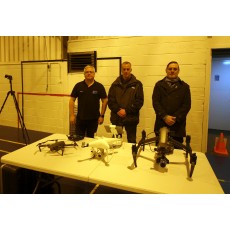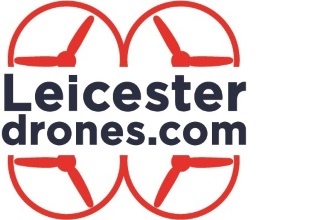
Most drone users would like to fly a drone inside and if you are a commercial operator you may have to sometime or another. All sorts of building have been filmed inside and out with drones for promotional purposes so I would like to go over a few things which you may need to think about. Please note that by inside I mean such places as industrial and commercial premises, factories, churches, museums and wedding venues - not your house. Flying a drone inside is very different to flying one outside and there are some very important things to be aware of so I have made a list below but it is by no means exhaustive.
1. Normal Safety checks. Every time you fly you should carry out your normal safety checks. Making sure batteries and remote are fully charged, props are fitted correctly then when you take off make sure the drone is operating as it should. You still need to do your normal safety checks when flying inside.
2. Build up your Skills. You need to make sure you have built up your operating skills outside before you fly inside with particular regard to flying in atti mode and getting used to flying closer to structures than you may normally do. When you fly inside in atti mode you drone will move around in the hover because it is not perfectly balanced and there are air currents inside buildings. The drone will also take longer to stop.
3. Get a spotter. When you are outside it is easier to see if somebody comes into the area you are operating in and there is plenty of space to move away or land somewhere else. The operating environment inside is very different and even tho you may have advised people and put up warning signs about what you are doing you may still get somebody who could suddenly walk into the area where you are operating. You may want to consider hard barriers where possible.
4. Loss of Signal. Make sure you know what will happen if your drone loses the connection with your remote control. When flying outside you may have your drone set to RTH or Return to Home in the event of a signal loss but this may not be suitable for indoor flying. Depending on what drone you have you may be able to change the Loss of Signal action to hover or land. There may be wifi and other remote control signals as well as lots of mobile phones, radios and in larger businesses there can be machines which can make magnet and electric interference. Even the material of the building itself may cause you to have signal problems.
5. Prop Wash. When you fly inside especially as you get higher the downdraft from the drone can stir up things that you may not be able to see from the ground such as dust or debris which may hit your drone. Remember that if you get too close to a ceiling the prop wash can suck the drone up.
6. Watch out for the roof. As you fly higher in a building you may not realise how close the ceiling is to the drone and most drone cameras can't look up so unless you have something very specialised such as the DJI Matrice M210 you need to be extra careful. The view of your drone from the ground can be difficult to judge and the wide angle on most drone cameras also makes judging distance difficult.
7. CAA rules still apply. It wasn't long ago that if you operated indoors you didn't have to comply with CAA regulations - not anymore. At the time of writing this is the official line from the CAA, ''The regulations make no distinction between flights made indoors or in the open; the whole safety criteria continue to apply.''
8. Use other Cameras. Remember you may not have to use the drone all the time to get all the footage you need. You could use a normal camera or a stabilised camera such as an Osmo or even the drone without props fitted works very well as a stablised camera. Please see the video below which I made with members of the Leicester Drone Club.



